Last Chance to Catch NYC's Holiday Notalgia Train
We met the voices of the NYC subway on our nostalgia ride this weekend!


While no one likes to have sanitation facilities in the neighborhood—not even an innocuous garage for trucks—they are an inextricable, crucial part of our city’s well being. This is particularly true during those messy New York City winters when we rely on sanitation trucks to keep our streets salted and clear of snow.
Recently, we had the chance to visit inside the New York City Department of Sanitation (DSNY)‘s new garage and salt shed complex in Hudson Square, Tribeca, designed by WXY architecture + urban design and Dattner Architects. While initially facing opposition from the community, who saw the new sanitation center as a sore thumb in an otherwise high-end neighborhood, the Spring Street Garage-and-Salt Shed currently serves 300,000 residents in Manhattan Community Districts 1, 2, and 5 with 250 employees. The modern facility provides innovative, sound functionality behind an architecturally modern facade.
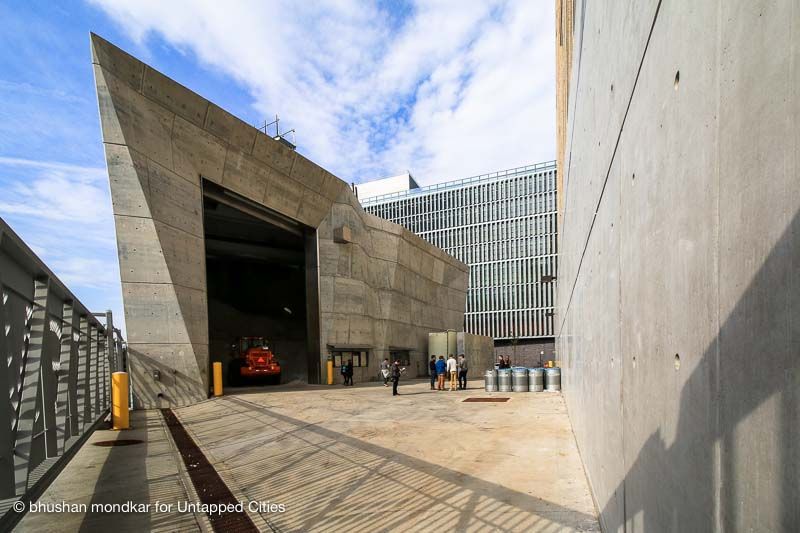
Adjacent to the garage building is a 70-foot, architecturally stunning, crystalline shaped salt shed. With a price tag of $20 million, this 5000-ton capacity shed has a few fascinating features that distinguish it from the 39 other salt sheds around the city that are stocked throughout the winter. While the salt crystal shape of the structure is a remarkable piece of public art that puts all other salt sheds to shame, the unorthodox design actually stems from engineering work. The walls of the shed are taller on the side facing the water, allowing for the salt to settle at its natural slanted angle of 32 degrees, also called angle of repose. This unique way of storage allows for trucks to drive up one side, dump salt more conveniently onto the mound, which will then settle in its own stable way.
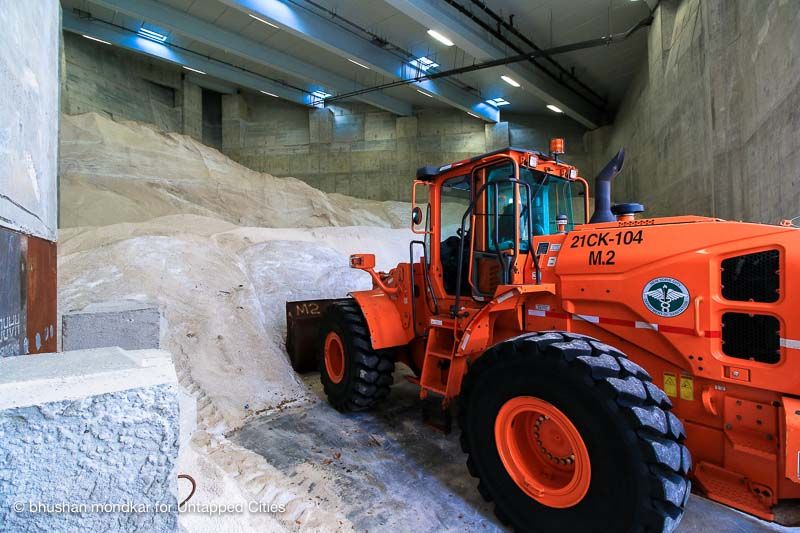
Furthermore, the doors of this first fully enclosed shed of DSNY are a whopping 35 feet tall and 24 feet wide, allowing for easy access for trunks moving in and out of the shed. The interior walls are lined with metal plating to prevent damage from the constant stream of trucks. With six-feet thick walls, it’s also safe to assume that no severe storm will be damaging the building and tarnishing the salt.
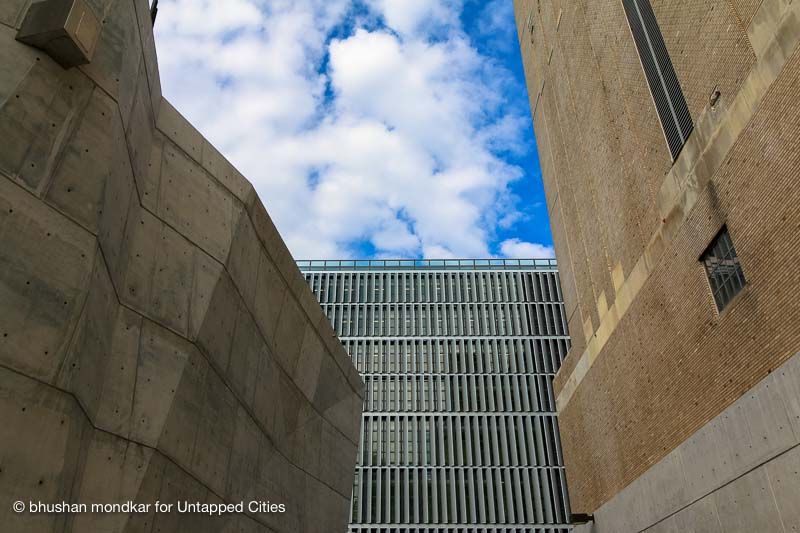
The sleek garage building on the corner of Canal Street and West Side Highway is a LEED Gold certified structure that cleans and repairs 150 sanitation trucks. The cleaning and repair bays are consolidated into one floor, allowing the top two floors to have shorter floor heights. This design feature allows for a 12 feet decrease in the overall height of the structure, addressing the community’s concern regarding the size of the building. In fact, the neighborhood’s dissent over the new Sanitation facility was so strong that architects designed the upper glassed-in stories atop a dark-brick ground floor that is slightly back, giving the building a slightly slimmer impression.
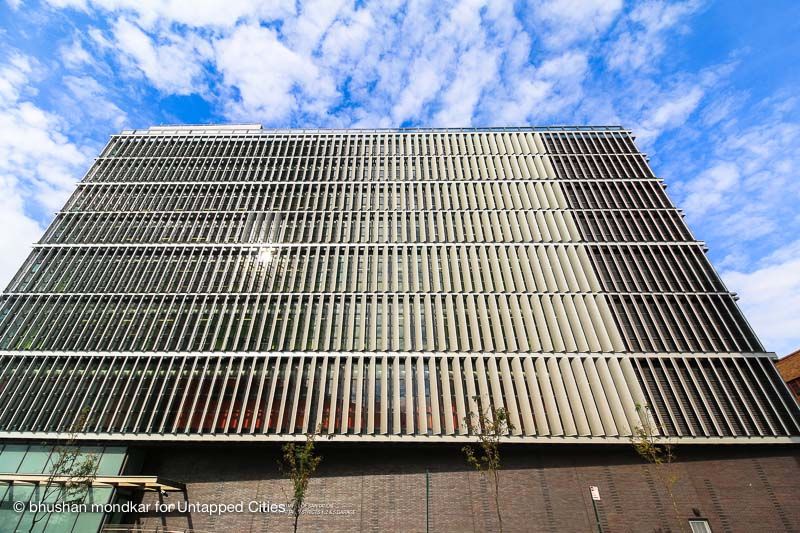
Another environmentally friendly design of the building deals with water usage. By using municipal steam to generate hot water for heating and mechanical ventilation, the building does not burn fuel. Furthermore, condensation that accrues as a by-product of steam is stored, alongside harvested rainwater from the roof, in a 20,000 gallon cistern and used for washing trucks. These strategies have contributed to a 77% decrease in potable water use in the building.
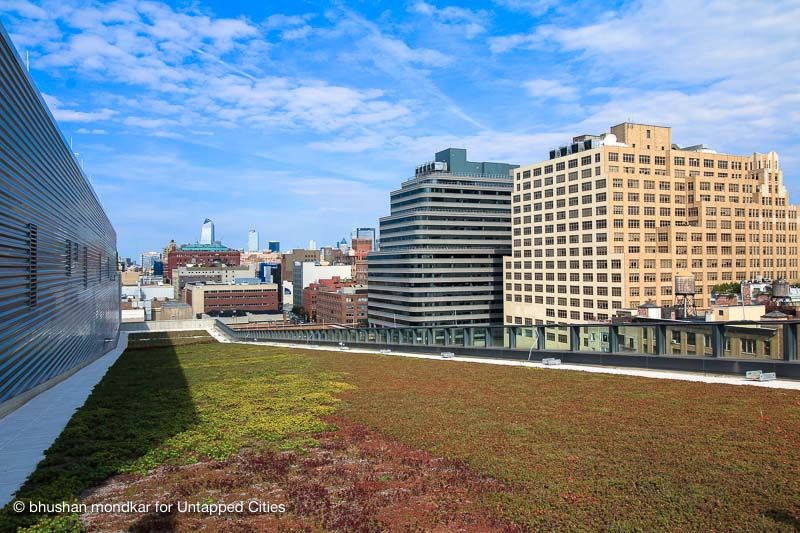
In addition to collecting rainwater, the garage building includes a spectacular 1.5 acre green roof. The 13,250 pre-planted trays, featuring 25 distinct drought resistant species, protect the roof membrane, while reducing heat absorption and enhancing the storm water retention
The sleek glass building is covered by 2,600 custom-made sunshades—or “fins,” as they call them—that allow natural light to flow into the building while reducing glare. On sunny days, only half of the light fixtures are on. Some of the fins are also operable, allowing them to swivel and block glare at certain times of the day.
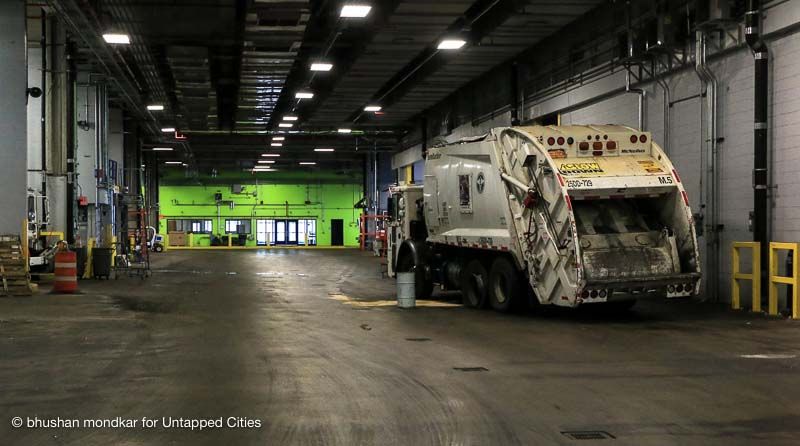
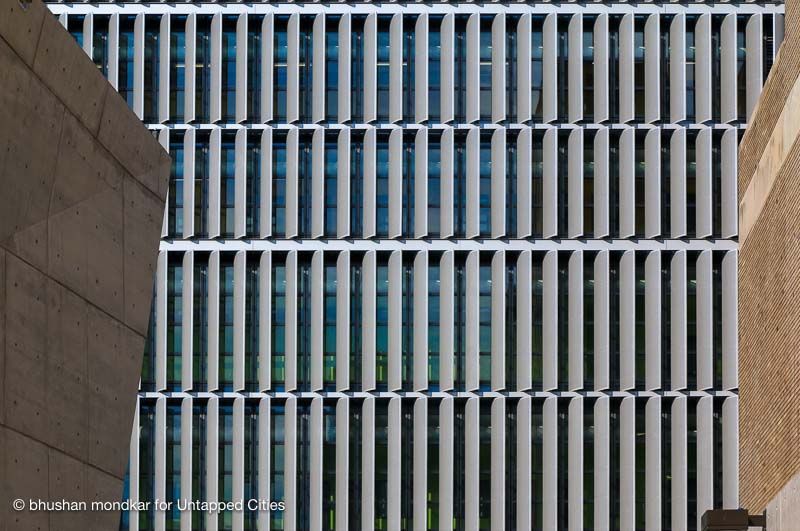
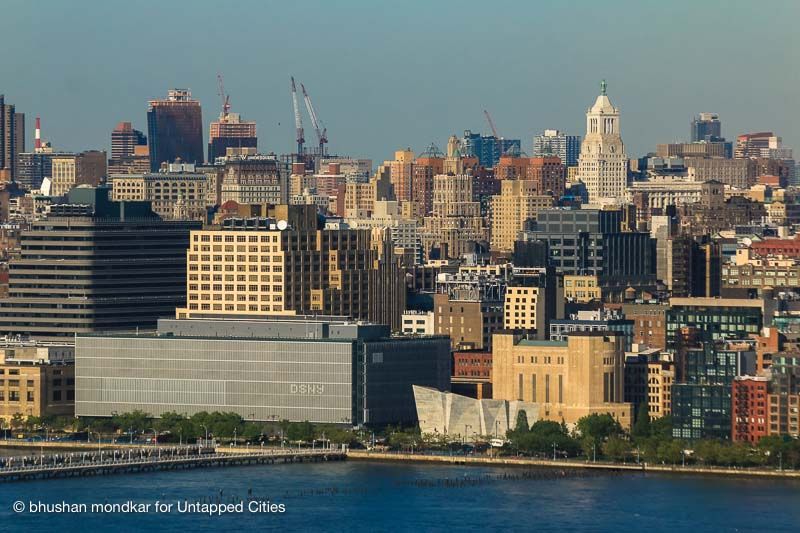
Next, check out the Top 1o Secrets of New York City’s Department of Sanitation and 5 of the Oldest and Most Intriquing Building’s in New York City’s Hudson Square. Also read about The $20 Million Spring Street Salt Shed.
Subscribe to our newsletter